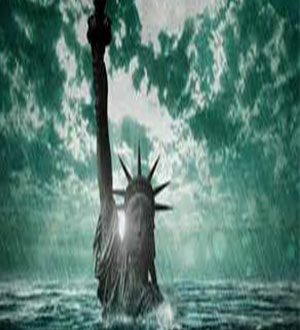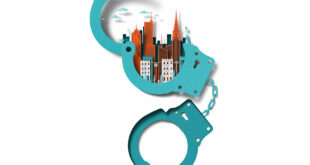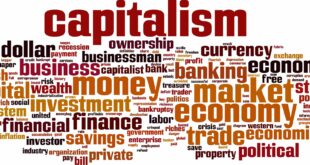We must tell the truth about the domination that is at the heart of the American Dream so that we may face the brokenness of our world.
Whether celebrated or condemned, the American Dream endures, though always ambiguously. We are forever describing and defining, analyzing and assessing the concept, and with each attempt to clarify, the idea of an American Dream grows more incoherent yet more entrenched.
The literature of this dream analysis is virtually endless, as writers undertake the task of achieving, saving, chasing, restoring, protecting, confronting, pursuing, reviving, shaping, renewing, and challenging the American Dream. Other writers are busy devouring, recapturing, fulfilling, chasing, liberating, advertising, redesigning, rescuing, spreading, updating, inventing, reevaluating, financing, redefining, remembering, and expanding the American Dream. And let’s not forget those who are deepening, building, debating, burying, destroying, ruining, promoting, tracking, betraying, remaking, living, regulating, undermining, marketing, downsizing, and revitalizing the American Dream.
We are exhorted to awaken from, and face up to, the dream, as we explore the myths behind, crisis of, cracks in, decline of, and quest for the American Dream.
My favorite book title on the subject has to be Andy Kaufman: Wrestling with the American Dream, which explores the comedian’s career “within a broader discussion of the ideology of the American Dream.” According to the book’s publisher, the author “brilliantly decodes Kaufman in a way that makes it possible to grasp his radical agenda beyond avant-garde theories of transgression. As an entertainer, Kaufman submerged his identity beneath a multiplicity of personas, enacting the American belief that the self can and should be endlessly remade for the sake of happiness and success. He did this so rigorously and consistently that he exposed the internal contradictions of America’s ideology of self-invention.”
As we can see, writers are eager to dive deep into the American Dream to find strikingly original insights, bold new interpretations, previously unexplored nuances. I will take a different approach: I want to skate on the surface and state the obvious. It’s a strategy seldom employed, I believe, because such a reckoning with our past leaves us uneasy about the present and terrified of the future. That strategy leaves us in anguish.
I believe that to be fully alive today is to live with anguish, not for one’s own condition in the world but for the condition of a broken world. My anguish flows not from the realization that it is getting harder for people to live the American Dream, but from the recognition that the American Dream has made it harder to hold together the living world.
So, our task is to tell the truth about the domination that is at the heart of the American Dream so that we may face the brokenness of our world. Only then can we embrace the anguish of the American Dream and confront honestly our moment in history.
The epic dream
James Truslow Adams appears to have been the first to have used the phrase “the American Dream” in print, in his 1931 book The Epic of America. This stockbroker turned historian defined it as “that dream of a land in which life should be better and richer and fuller for everyone.” But he didn’t reduce the dream to materialism and emphasized U.S. social mobility in contrast with a more rigid European class system:
“It is not a dream of motor cars and high wages merely, but a dream of social order in which each man and each woman shall be able to attain to the fullest stature of which they are innately capable, and be recognized by others for what they are, regardless of the fortuitous circumstances of birth or position.”
Adams was, in fact, concerned about the growing materialism of U.S. life, and he wondered about “the ugly scars which have also been left on us by our three centuries of exploitation and conquest of the continent.” He was writing at the beginning of the Great Depression, coming off the go-go years of the 1920s. So, not surprisingly, his list of those problems will sound familiar to us:
“how it was that we came to insist upon business and money-making and material improvement as good in themselves; how they took on the aspects of moral virtues; how we came to consider an unthinking optimism essential; how we refused to look on the seamy and sordid realities of any situation in which we found ourselves; how we regarded criticism as obstructive and dangerous for our new communities; how we came to think manners undemocratic, and a cultivated mind a hindrance to success, a sign of inefficient effeminacy; how size and statistics of material development came to be more important in our eyes than quality and spiritual values; how in the ever-shifting advance of the frontier we came to lose sight of the past in hopes for the future; how we forgot to live,in the struggle to ‘make a living’; how our education tended to become utilitarian or aimless; and how other unfortunate traits only too notable today were developed.”
Yet for all his concerns, Adams believed that the United States could overcome these problems as long as the dream endured, and that led him into the dead end of clichés: “If we are to make the dream come true we must all work together, no longer to build bigger, but to build better.” For Adams, as the book’s title makes clear, the story of America is an epic, and “The epic loses all its glory without the dream.”
But dreams of glory are bound to betray us, and 80 years later the question is whether the story of the United States is an epic or a tragedy. More on that later.
The dream and domination
Adams’ definition of the dream as the belief that “life should be better and richer and fuller for everyone” is rather abstract. One historian’s “short history” of the concept highlights the dreams of religious freedom, political independence, racial equality, upward mobility, home ownership, and personal fulfillment that run through U.S. history, but a concept used by so many people for so many different purposes can’t be easily defined. Rather than try to organize the complexity, I want to focus on what has made the American Dream possible. That much is simple: The American Dream is born of, and maintained by, domination.
By this claim, I don’t mean that the American Dream is to dominate (though many who claim to be living the American Dream revel in their ability to dominate), but rather that whatever the specific articulation of the American Dream, it is built on domination. This is the obvious truth on the surface, the reality that most dreamers want to leave out, perhaps because it leads to a painful question: How deeply woven into the fabric of U.S. society is the domination/subordination dynamic on which this country’s wealth and freedom are based?
First, the American part: The United States of America can dream only because of one of the most extensive acts of genocide in recorded human history. When Europeans landed in the region that was eventually to include the United States, there were people here. Population estimates vary, but a conservative estimate is 12 million north of the Rio Grande, perhaps 2 million in what is now Canada and the rest in what is now the continental United States. By the end of the so-called Indian Wars, the 1900 census recorded 237,000 indigenous people in the United States. That’s an extermination rate of 95 to 99 percent. That is to say, the European colonists and their heirs successfully eliminated almost the entire indigenous population — or the “merciless Indian Savages” as they are labeled in the Declaration of Independence, one of the most famous articulations of the American Dream. Almost every Indian died in the course of the European invasion to create the United States so that we may dream our dreams. Millions of people died for the crime of being inconveniently located on land desired by Europeans who believed in their right to dominate.
Second, the dream part: Adams pointed out that while this is always about more than money, the idea of getting one’s share of the American bounty is at the core of the American Dream. That bounty did not, of course, drop out of the sky. It was ripped out of the ground and drawn from the water in a fashion that has left the continent ravaged, a dismemberment of nature that is an unavoidable consequence of a worldview that glorifies domination. “From [Europeans’] first arrival we have behaved as though nature must be either subdued or ignored,” writes the scientist and philosopher Wes Jackson, one of the leading thinkers in the sustainable agriculture movement. As Jackson points out, our economy has always been extractive, even before the industrial revolution dramatically accelerated the assault in the 19th century and the petrochemical revolution began poisoning the world more intensively in the 20th. From the start, we mined the forests, soil, and aquifers, just as we eventually mined minerals and fossil fuels, leaving ecosystems ragged and in ruin, perhaps beyond recovery in any human timeframe. All that was done by people who believed in their right to dominate.
 Mouood Mouood English Edition
Mouood Mouood English Edition




